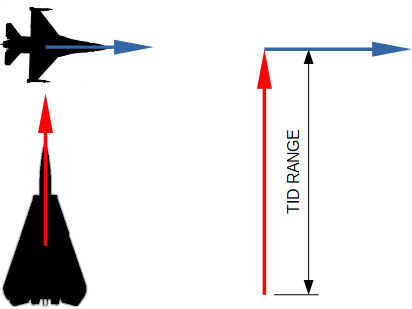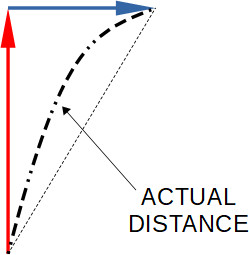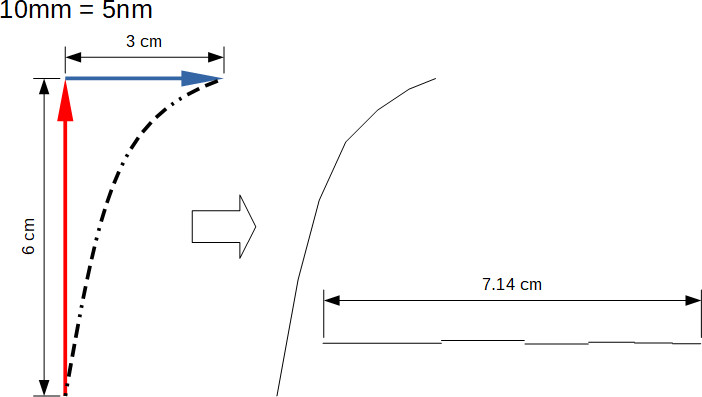Your Attention Please!
This article is outdated. Heatblur and ED have developed a new missile API in late 2020 so the way the WCS guides the missiles has changed.
I am waiting for them to finalize the new implementation before writing a new study about the updated guidance model and the AIM-54.
The following is a brief article I planned to include in the fourth part of the AIM-54 PK study. It should have been just a brief mention but I expanded it by including results from previous tests, generating therefore a clear picture of the AIM-54 Phoenix during its flight, right before turning active.
Since the lofted trajectory of the AIM-54 is the means by which the WCS tries to achieve the goal of defeating a target at great distances, I wanted to highlight who understanding the value of what we call “Range” and its implications is not always immediate.
The lofted trajectory
In order to better understand the lofting mechanic, I obtained the TAS and altitude of the Phoenix as it turned active from Tacview (note: I consider this distance ~9-10nm, namely the distance at which the AI starts defending. Heatblur stated that the activation range is actually ~7nm). I tested such values at 20,000 using the Hot scenario, these are the results:


In case you are wondering, the AIM-54C Mk47 fired at 45nm has been defeated kinetically.
This is the ratio Altitude/TAS. Intuitively, if the ratio increases, than either the numerator (Alt) is increasing and/or the denominator (TAS) is decreasing.

Between 15nm and 25nm, the AIM-54C is not guided into a lofted trajectory by the AWG-9 WCS and the rocket motor is active for the majority of the travel-time between the F-14 and the target. After ~25nm, the energy provided by the rocket motor is not sufficient enough to sustain the missile in a flat trajectory. The energy of the missile is theferore invested by the WCS into altitude by means of the lofted trajectory. The problem is, as the range increases too much, the rocket motor simply doesn’t provide enough energy to sustain the climb and, by the time the missile as reached the target post diving, it doesn’t have enough speed to pose as a real threat.
A consideration I haven’t made yet: the lofted trajectory depends on the Range, and we generally consider it as the distance between the F-14 and the target. It may come from the TID, DL or from a BRAA call from the controller. But the range and the physical distance covered by the missile almost never match. How come?
Understanding the range
Let’s consider this simple situation. It fairly corresponds at the Notching scenario I used in my PK model: our F-14 is flying N at a certain speed, the target is slower and flying due East at slower speed. The angle between the two aircraft is 90°.
By hooking the target, the TID will display the range.

As we know, the target is not standing still. Assuming it won’t change its course, it will be still flying E. Therefore, the AIM-54 has to travel heading N-NE in order to hit the target.
Please note that these sketches do not follow any scale or realistic value. Nevertheless, to make this simple, let’s assume that the range is 30nm and the missile has to fly 15nm to the E in order to hit the target.

We can simply calculate the distance that the AIM-54 has to cover in order to hit the target. By applying the Pythagorean theorem, the result of this “Theoretical Range” is:
TH_RNG=√(30²+15²)= ~33.5nm.
Therefore the Theoretical Range > TID Range. This is the first indication of how the distance covered by the missile on its way to the target doens’t necessarily correspond to the initial range value.
Reality though, it’s different and more complex. The AIM-54 is guided by WCS following what looks to be a Pure Pursuit trajectory, therefore the Actual Distance or the Path that the missile follows in order to get to the target is something similar to the following:

This is a Tacview image from the AIM-54 Probability of Kill study part IV:

Despite the point of view, the missile behaviour is clearly similar.
I changed the dimensions of my sketch to be proportional with the data used so far and calculated the length of the path by approximating it with a half-dozen segments (unfortunately LibreOffice Draw does not have a tool to measure curves).

The result of this approximation is 71.4mm, equal to 35.7nm, which is 5.7nm higher than the initial Range value. This value may not sound much, but in some conditions, for instance if the target is particularly fast, the initial range is greater, the altitude is low and so on, this difference may greatly affect the performance of the missile.
As I said already, this is just an example but the point is clear: the range alone is not enough to estimate the chances of hitting the target. Other parameters are necessary to better estimate the performance of a missile, many of which are available on the TID.
